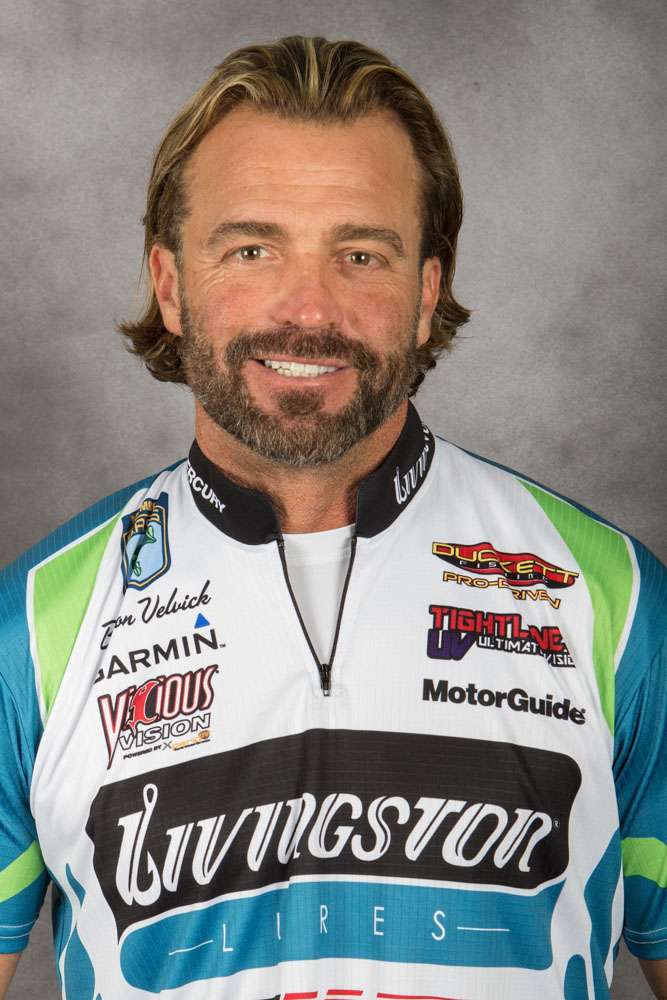Depending upon where you live in our country, fall will be here in a couple of weeks… or maybe in a couple of months. Either way, now's the time to start thinking about catching big bass when the wind cuts an edge and the leaves turn gold.
Before I get into the details of this piece, however, I want to acknowledge Rick Clunn's role in my thinking and in the development of my techniques. Many years ago he pointed out to me that nearly every tournament ever won in the fall — especially in the month of October — has been won in the back of a creek, in a pocket or in a bay.
He's absolutely right. Bass move into these areas as the air temperature drops and forces the water temperature down. Maybe they're following the forage; maybe they're following the water temperature. No matter, they're there. That's what matters to us as anglers. (The length of daylight may have an important effect on this, too. But that's a topic for another day.)
Ok, so you're not fishing a tournament. All you want to do is have some fast action with your family or friends. That's fine, but you still can't catch them if they aren't there. You must fish where the fish are to have any success. Clunn's observation stands — tournament or no tournament.
There's no better lure than a swimbait at this time of the year. They mimic natural forage like nothing else you can throw. In order for them to do that, however, two conditions must be operable.
First, the water must be clear. That's usually not a problem in the fall, but if it is go with something different. Swimbaits are sight baits. They are not effective in heavily stained or muddy water.
Second, you need a little wind. I'm not as hard-nosed about this as I am about water clarity because they will catch a few bass under slick water conditions. Nevertheless, a little breeze to break up the light penetration will do wonders for your catch rate.
Try to pick a bait with more size to it at this time of year. Fall is a time when the forage is at its largest. Most of it has had all year to grow… so it's going to be big, or at least bigger than it was two months ago. As you've heard me say a dozen times before — nothing is more important with swimbaits than that they match the hatch. That starts with size.
The next step in matching the hatch is finish. You need to find a bait that looks like what your bass are chasing. In some lakes, that'll be bluegill; in others, it'll be shad. Less frequently, it'll be something else such as trout or tilapia.
That's why I prefer Tru-Tungsten's Tru-Life Swimbaits late in the year. They're available in a wide array of sizes and finishes. No matter what forage you're trying to duplicate — size or type — there's a Tru-Life Swimbait that matches it in size or finish.
There's another reason I like them, too. I can adjust their weight with the tungsten balls that come with each bait. That's critically important.
Sometimes the forage moves fast. That causes the bass to move fast. When that happens I can remove the tungsten balls from my lure, crank it fast, and keep it near the top of the water column.
On the other hand, if my bass are down in the water column I can add a ball, or two, or three, or four, and get down where they are with a slow roll technique. That's equally useful on occasion.
The Tru-Life system allows me to rig two rods, exactly the same except for lure weight, and fish anywhere I need to fish to put the lure right in front of feeding bass. In the sport of bass fishing, that's as good as it gets.
Sometimes guys will tell me that this type of system may work, but it's just too expensive for their budgets. I'll answer that by giving you a few tips on how to save money and still fish with them.
You don't need everything they make. You should know if the forage in your local waters is bluegill, threadfin shad, gizzard shad, or something else. The only finish you need is the one that matches your local conditions.
And you don't need every size they make. You only need a couple to match the size of your local baitfish. Remember, you can adjust the weight up and down on the same lure as necessary.
Try swimbaits this fall. See how they do when compared to more conventional offerings such as spinnerbaits, crankbaits and jerkbaits. You'll be pleasantly surprised.





